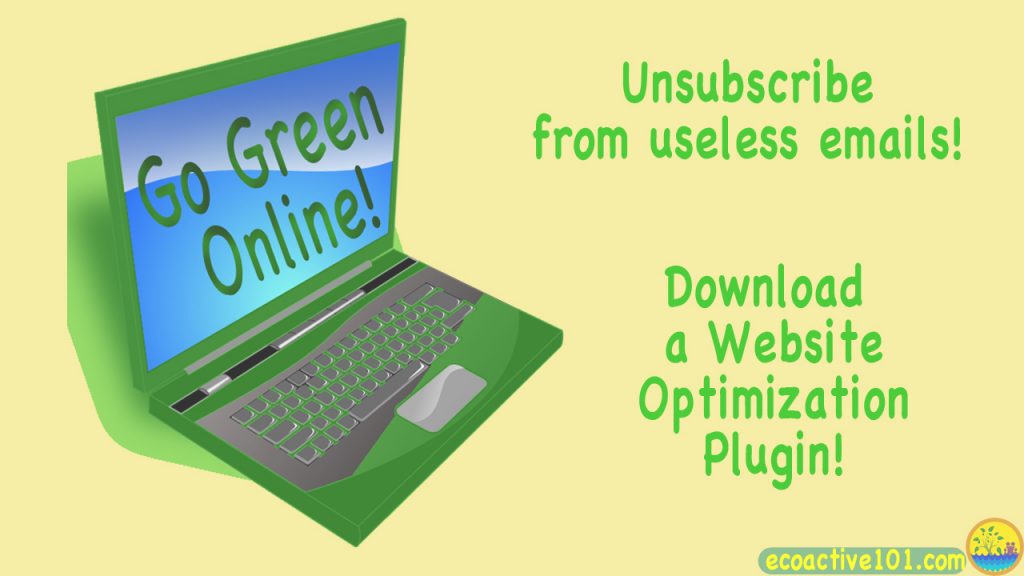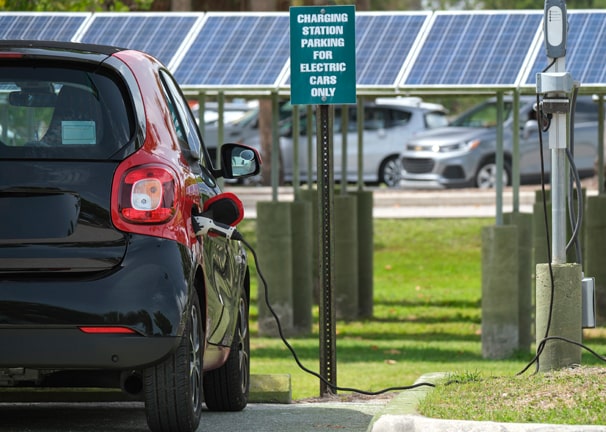For families these days, climate change is more and more top-of-mind. If you’re concerned about global warming but have no idea what to do, this post is for you.
This list of climate actions is hardly exhaustive. But there are enough climate change action tips here to keep you busy for a while.

Do you need to implement all 38 items on this climate change solutions list? Of course, that would be great! Start by looking over the list and checking off the ones you’ve already done. If you don’t find any, no worries—pick one or two things and do them. And then come back and pick a couple more. Better yet, download our Cheat Sheet with 50+ actions, small and large, and keep it in a handy place.
Only a few of the items, those toward the bottom of the list, require major expenditures. As to the rest, you can do them with little or no financial investment at all and still make a big difference.
How Can YOU Help to Solve Climate Change?
Can one person really make a big difference? Well, one plus one plus one adds up! So … if you let your friends know about the steps your family is taking, you will inspire some of them to follow suit.
For example, research shows that installing solar panels on your roof, for instance, makes your neighbors more likely to do the same.
That’s what “grassroots” is all about!
Don’t think you can do it alone? Of course not! That’s why we’ll be launching a powerful education-and-action program for adults and teens in 2023: to give you direction and the support you need to make a real difference! Be sure to stay in the loop to find out more.
Ready to take a peek at our list? Here goes!
Upgrade Habits that Worsen Climate Change
1. Stay Conscious. Keep this list of climate change solutions in mind whenever you’re tempted to act like a consumer.
2. Enlist your kids in everything you do to “go green,” and help them design their own climate change solutions. After all, it’s their planet, too—and let’s hope they’re going to be here a lot longer than you. Besides, collaborating with them on climate change will give them the confidence of knowing that you, your family, and they personally are taking action to make a difference.
3. Buy Used. Local thrift stores in most towns offer good clothing, furniture and decor, cars, exercise equipment, books, videos, electronics, and more.
4. Reduce landfill by recycling. Find out what grades of plastic your community recycles, and be sure to clean those containers after use! Likewise, disassemble the cardboard boxes so more can be recycled in the same container.
5. To further reduce landfill: reuse or repair. Reuse whenever you can or give away things you don’t use anymore instead of tossing them. Repair what’s broken, or check to see if your community has a free fixit clinic.
6. Cut down on eating beef.The cattle industry contributes enormously to methane production and destroys the land’s ability to absorb carbon dioxide. If you’re ready to start eating less meat, especially beef, a simple online search will show you the many benefits of a vegetarian or flexitarian diet.
7. Compost food waste. It doesn’t take a lot of space, and you can purchase an indoor composting unit to help you start the process. And if you need instructions for composting, you can easily find them online.
8. Wash clothes in cold water. Line-dry them! You’ll be amazed at how good they look and smell—I certainly was. If you’ve no room for a line, dry your clothes in the dryer for just a few minutes, long enough to get the wrinkles out, and then hang them indoors on a rack. (I started doing this years ago to save wear and tear on my clothes, and yes, it makes them last a lot longer. I use a rack originally designed for CDs!)
9. Cut down on single-use plastics.Instead of plastic wrap, buy or make beeswax or beeless vegan food wraps and/or buy silicone food storage bags online. Take your own canvas bags to the grocery store, and bypass their plastic produce bags—I put my vegetables straight into my canvas bags, then take them out at the register. For small items, like strawberries and mushrooms, carry thin, lightweight cloth bags in the car.
10. Use alternative transportation modes. Extend whatever positive changes you made during Covid into your ongoing life—do your level best not to sink back into old habits. Walk or bike when you can—exercise is good for your body and spirit! And for the environment. Consider an electric bike if hills are a problem. Or carpool, or use public transportation.
11. Inform yourself and VOTE in every election. Being knowledgeable about local, state and national issues can make you a powerful force.
“Green Up” Your Home
12. Switch to LED lightbulbs and turn off lights when you’re not using them.
13. Unplug electronics when you’re not using them to minimize consumption of standby power.
14. Close curtains in summer to keep the heat out and in winter to help keep it in.

15. “Go green” online. Believe it or not, the Internet is a huge source of CO2 emissions, with huge increases every year. Unsubscribing from all those emails you get that you never read will help a lot.
Minimize the time you spend playing games on your computer—if you must play them, switch to playing them on your phone. And start reading more and streaming video less.
If you have a website, check its carbon footprint. To fix a large carbon footprint, download a website optimization plugin and activate it. (I did this and it made a huge difference.)
Finally, look for green hosting for your website. Very common in other countries; here in the good ol’ USA we’re just beginning to have green hosting available. You can find some options here.
16. Invest in energy-efficient appliances for your home.
17. Insulate your home.
18. Install solar panels or a wind turbine on your home if you haven’t already done so.
19. Switch out your HVAC and hot water heating systems for a heat pump, especially if your systems currently run on natural gas.
A heat pump draws hot air from outside and uses it heat the air and/or water in your home; to cool your home and/or your water, it does the opposite.
A heat pump will pay for itself in a few years and save you 30-90 percent on your energy bill. Countries all over the world have been investing in heat pump technology, and the US recently joined the push with Biden’s June, 2022 declaration that heat pumps are vital to the national defense.
Heat pumps are particularly important as an alternative to natural gas, which is far more detrimental to the greenhouse layer for the first 20 years than CO2.
20. Install a programmable thermostat to keep the temperature just right—and see if you can’t adjust your “just right” to be more in line with your efforts to control climate change!

Get a “Greener” Car
21. Retire your gas guzzler in favor of a hybrid or electric car. The US federal electric vehicle tax credit offers up to $7,500 to people who purchase a new EV and up to $4,000 for the purchase of a used EV. And lawmakers are pushing to expand those even further. HINT: The used EV market is growing quickly, with batteries designed to last for many years.
While it is true that many online articles touting the environmental superiority of EVs fail to mention either the destructive nature of the mining of non-renewable minerals for lithium-ion batteries or the fossil fuel dependence created by manufacturing and shipping electric cars, EVs are still more eco-friendly than cars with internal combustion engines.
22. Once you have an electric vehicle, install a small solar arrayon your home to power your electric car’s battery. And then use it to generate surplus power you can use to lower your home utility bill.

Take Community Action on Climate Change
23. Shop your local farmers’ market. The fruits and vegetables are fresher and you avoid the ecological cost of transport.
24. Keep up to date on political action in your community. A good way would be to attend and speak up at City Council or other meetings where serious issues are being decided, such as community energy coalitions, new housing or commercial development proposals, and questions pertaining to water and air quality, sewer, etc.
In my town, we just conducted a successful petition drive to force our aberrant City Council to let the people vote on a proposed new development they had approved. Yay!

25. Take part in organized marches, Zoom calls and other activities designed to raise awareness of climate change. For example, activities organized by groups such as Sierra Club Greenpeace, and Citizens’ Climate Lobby.
And consider including your kids in your awareness-raising activities. Griffie’s Eco Adventure Series of children’s picture books offers a number of fun approaches to raising awareness.
26. Start a community garden.Stop being a sitting duck for food shortages! If the land is available, get together with your neighbors and get a garden going. Or if you have a homeowners’ association, help them see how everyone would benefit and that community gardens do not lower property values.
27. Plant trees, especially the common horse-chestnut, black walnut, American sweetgum, ponderosa pine, red pine, white pine, London plane, Hispaniolan pine, Douglas fir, scarlet oak, red oak, Virginia live oak, and bald cypress.
Travel and Outdoors
28. Switch to more eco-friendly outdoor activities. Choose hiking or skiing, sailing (not motor cruising), kayaking, dancing, tennis, or other activities that strengthen your body and don’t pollute.
29. When you travel, go by train or bus instead of flying. You might think, oh, you’re just taking a short flight—say, from Orlando to Miami or from Santa Fe to Phoenix—so it’s not really a problem. Wrong! Short flights are the worst. And long flights are really bad for the environment too. Compared to every other mode of transport, the best flight is the one you don’t take.
30. Eliminate cruising! Cruise ships not only have a high carbon footprint, they are also detrimental to ocean life and contribute only minimally to the local ports of call that are left to deal with the waste the ships leave behind.
True, the problem of dumping sewage—perhaps in the face of an oncoming whale!—has lessened since the major lines were hit with huge fines for polluting US waters a few years ago. But it hasn’t disappeared.
Also, the number of whales and dolphins has declined in areas prone to ship noise and pollution. “In all about 55 marine species have been noted to have suffered due to exposure to sound of varying frequencies. These include sperm whale, grey whale, mink whale, pygmy sperm whale, killer whale, sea bass, pink snapper, goldfish, cod, haddock, bluefin tuna, squid, lobster, brown shrimp etc.”
31. Buy carbon offsetsto balance all the non-green things you do. Many air and cruise lines offer them (Whoa! Buying offsets doesn’t make it okay to use a line with a high carbon footprint.) Or you can find your own carbon offsets online.
True, they’re not really a solution—most revolve around planting trees that don’t grow fast enouigh to meet our short carbon reduction requirements—but they’re cheap, and better than nothing if you must travel.
Become an Influencer
32. Join hands with an active environmental organization and take part in their activities to influence policy decisions at all levels of government.
33. Start a climate change news or awareness blog or vlog and publicize it on social media.
34. Write climate change songs, record them, and publish them over the Internet.
35. Get to know your neighbors by engaging them in discussions as to how they’d like to see the neighborhood develop, what they think about climate change, their views on a city ordinance or other new development, and so on. And encourage them to register to vote and then to VOTE.
36. Join a neighborhood website and use it to inform readers about community awareness activities.
Go “Green” with Your Money
37. Switch to a green bank—this is one of the most important items on this climate change solutions list. Because whether we like it or not, money talks. Naturally, almost anything is greener at this point than Chase Bank or Bank of America. Local credit unions may be a good choice. Check out their investment portfolio!
38. Become a green investor. This is another HUGE one! Many green investments are returning handsome dividends now, and this will be even truer in the future.
What other steps can you think of to help move us toward a sustainable future? Let us know in a comment! And don’t forget to download your 3 FREE Eco-Friendly Cheat Sheets, with over fifty actionable items.
To your eco-active empowerment,
Chiwah
Eco Activist 🙂 Kids’ Book Author 💡 Editor 😯 Book Formatter 😎 Cover Designer 😀 Publisher
AWriteToKnow.com, PetWrites.com
Email: Info@EcoActive101.com

